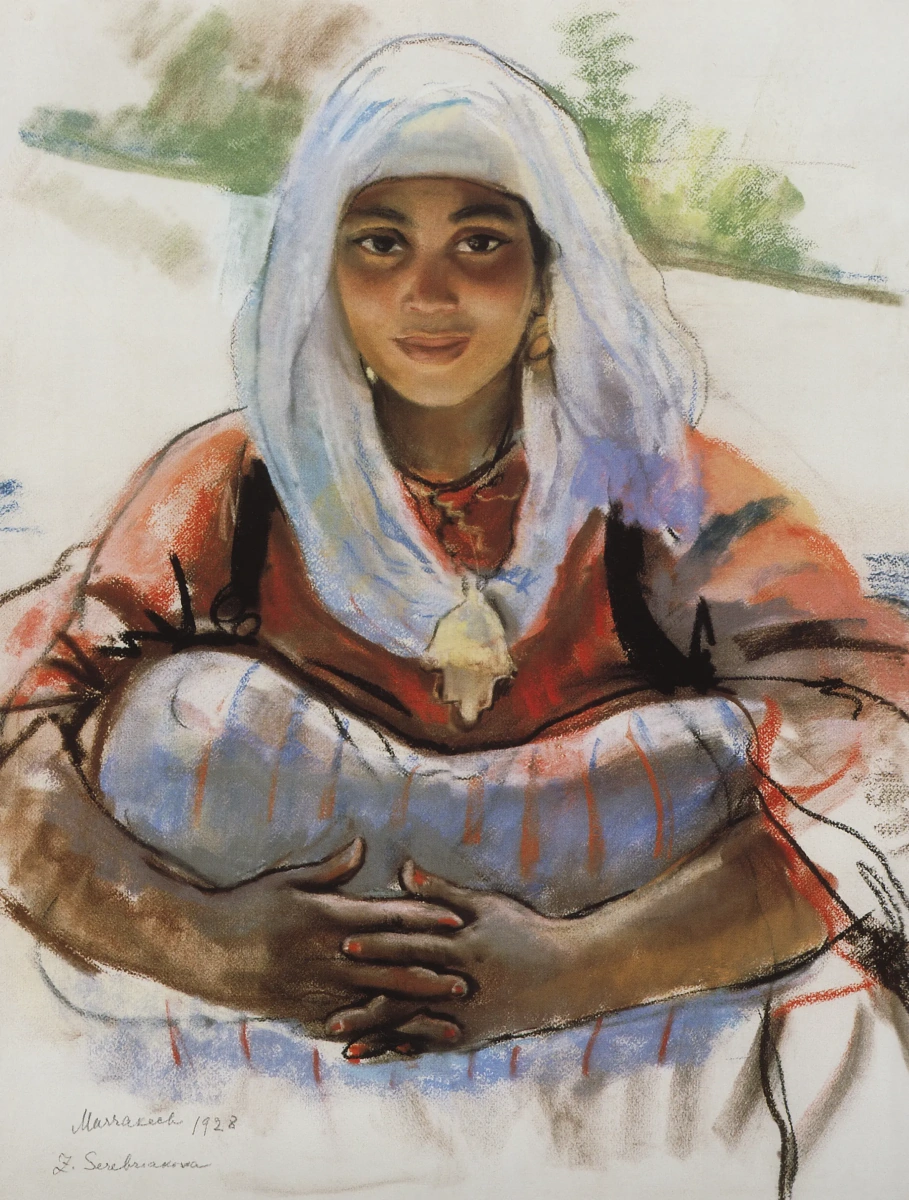Lit by the Sun


















Description of the artwork «Lit by the Sun»
This pastel work belongs to the so-called Moroccan cycle by Serebryakova, which includes about 200 works. These are virtuoso “études”, as the artist herself called her pastel sketches, which she created during her two trips to the exotic lands in 1928 and 1932. Also, based on her fresh impressions from those travels, the artist painted several oil works in Paris.
Zinaida Serebryakova was destined to live two fates. In her first fate, she was a descendant of an artistic family, a happy, beloved and loving wife, a mother of adored children, a famous artist. Her second fate was being a widow, who was separated from her children, who was struggling to earn her piece of bread, without her a place in a foreign land; she lost her homeland, she was torn apart by the anxiety and devoured by her hopeless longing.
There was no golden rain falling on Serebryakova in Paris. “No one understands that it is insanely difficult to start without a penny. Time goes by, and I keep fighting in the same place,” she wrote to her mother in despair.
The brightest event of Zinaida Serebryakova’s “life after life” was, perhaps, her trip to Morocco. The Belgian Baron Brower saw her paintings at one of the exhibitions and offered to pay for her trip so that he could pick up any pictures he liked from the paintings created there. In 1928 and 1932, Zinaida travelled to Morocco.
Here follows an excerpt from the artist’s letter, sent to Moscow to E. E. Lanceray from Marrakesh in December 1928: “I was extremely struck by everything here — the costumes of the most varied colours, all human races mixed here: Negroes, Arabs, Mongols, Jews (completely biblical), etc. Life in Marrakesh is also fantastic — everything is done in an artisanal way, like it must have been 1000 years ago. In the square called Jemaa el-Fnaa, every day, thousands of people sit in circles on the ground, watch dancers, magicians, snake tamers (just like dervishes and Hindus), etc., etc. All women are closed from their feet to head, and nothing but eyes is visible. I’ve been here for two weeks now, but I’ve lost my mind from the novelty of impressions, so that I can’t figure out what to draw and how to draw. As soon as you sit down (in a street corner, however, it is always stinking) to draw, women leave the same moment, but the Arabs do not want to be painted, and close their shops and demand their tip — 20 or 10 francs per hour!!! Actually... I risked this trip, because the money for it was loaned to me by that Mr. Brower — I painted portraits at his place in Bruges this summer. He wanted me to make “nude” beautiful native women, but this fantasy appears completely impossible, as no one wants to pose even in their bedspreads, when only eyes in the slit are visible, and not to mention nude.” However, Serebryakova still managed to find models for posing in the nude.
Critics note the great maturity and sophistication of the works created during her second trip to Morocco in the spring of 1932: the artist visited Marrakesh, Fez and Sefrou.
Serebryakova’s daughter Tatiana wrote about the time of her second stay in Marrakesh: “The contact with this fantastic world made her forget all the troubles, she wandered the streets of Marrakech and Fez and drew on and on... She drew so greedily, so much that she did not have enough paper, which she took with her, and Katyusha sent her another batch. She worked extremely quickly during this period. This speed was caused by the fact that the Koran forbids people to pose, and she hardly managed to “catch” a model for a small fee. She told me that she hadn't worked on a single pastel portrait more than thirty minutes, while each of her sketches is a complete work of art! She was attracted by the proud gait, the posture of the Arabs, the slenderness of their figures and the decorativeness of their burnouses and robes.”
Based on the materials from Arthive. Quotes from the letters: "Zinaida Serebryakova." Rusakova A. A., 2017


